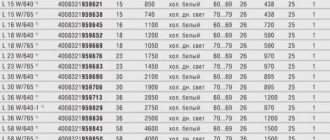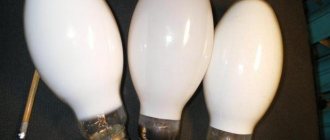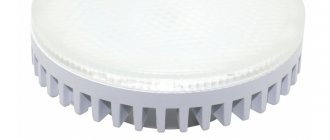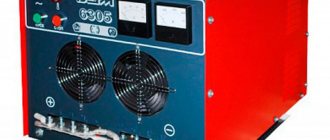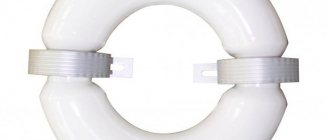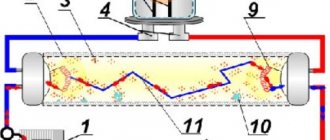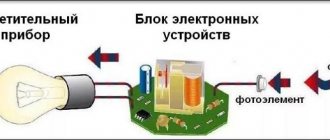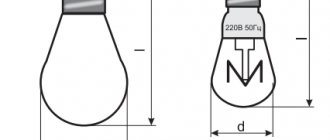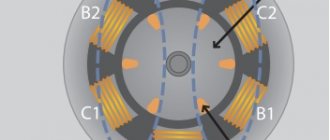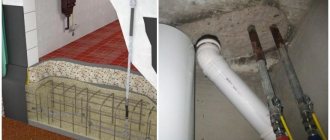The incandescent lamp is the first electric lighting device that plays an important role in human life. It is this that allows people to go about their business regardless of the time of day.
Compared to other light sources, this device is characterized by simplicity of design. The luminous flux is emitted by a tungsten filament located inside a glass bulb, the cavity of which is filled with a deep vacuum. Later, to increase durability, instead of vacuum, special gases began to be pumped into the flask - this is how halogen lamps appeared. Tungsten is a heat-resistant material with a high melting point. This is very important, because in order for a person to see the glow, the thread must become very hot due to the current passing through it.
Who and when was the first in the world to invent the electric light bulb?
Everything changed with the invention of electricity . Little by little, inventors found a way to safely, brightly, and cheaply illuminate everyone's homes.
On the issue of the primacy of the invention of the light bulb, as in many others, domestic and world points of view differ. , Pavel Nikolaevich Yablochkin and Alexander Nikolaevich Lodygin are considered to be the discoverers . Scientists have come up with different types of lighting devices. Yablochkin was the first to design an arc lamp 1875-1876 . However, it was later found to be ineffective. Lodygin, two years earlier ( 1874 ), received the first patent for an incandescent lamp .
In the world it is believed that the first light bulb was invented by Thomas Edison . The American scientist received his patent in 1879, five years later than Lodygin. After much experimentation, Edison designed a device that burned for almost 40 hours - the maximum possible period for that time. In addition, the inventor made production cheaper so that everyone could afford a light bulb.
There is no clear answer to the question of the primacy of the invention of the lamp. Many scientists in different countries worked on it, but not all patented their discoveries. The light bulb can definitely be called the collective brainchild of the world scientific community.
History of creation
Interestingly, the first lamps did not use tungsten, but a number of other materials, including paper, graphite and bamboo. Therefore, despite the fact that all the laurels for the invention and improvement of the incandescent lamp belong to Edison and Lodygin, it is wrong to attribute all the merits only to them.
We will not write about the failures of individual scientists, but we will give the main directions in which the efforts of the men of that time were made:
- The search for the best filament material. It was necessary to find a material that was both resistant to fire and characterized by high resistance. The first thread was created from bamboo fibers, which were covered with a thin layer of graphite. Bamboo acted as an insulator, graphite as a conductive medium. Since the layer was small, the resistance increased significantly (as required). Everything would be fine, but the wood base of the coal led to rapid ignition.
- Next, the researchers thought about how to create conditions of the strictest vacuum, because oxygen is an important element for the combustion process.
- After this, it was necessary to create the connector and contact components of the electrical circuit. The task was complicated by the use of a layer of graphite, which is characterized by high resistance, so the scientists had to use precious metals - platinum and silver. This increased the current conductivity, but the cost of the product was too high.
- It is noteworthy that the Edison base thread is still used to this day - marked E27. The first methods of creating a contact involved soldering, but in this situation today it would be difficult to talk about quickly replaceable light bulbs. And with strong heating, such compounds would quickly disintegrate.
Nowadays, the popularity of such lamps is falling exponentially. In 2003, in Russia the amplitude of the supply voltage was increased by 5%; today this parameter is already 10%. This led to a reduction in the life of the incandescent lamp by 4 times. On the other hand, if you return the voltage to an equivalent value down, the luminous flux output will be significantly reduced - up to 40%.
Remember the training course - back in school, a physics teacher conducted experiments demonstrating how the glow of a lamp increases with increasing current supplied to the tungsten filament. The higher the current, the stronger the emission of radiation and the more heat.
Scope of use
Not so long ago, incandescent lamps were present in various areas of life, in everyday life and in enterprises. This is due to the simplicity of their installation, operation and maintenance. Used in the following areas:
- General purpose for indoor and outdoor lighting in private homes, apartments, offices.
- Local application - for illuminating workplaces.
- There are also special automotive incandescent lamps.
- Installed on trains, ships, and airplanes.
- Miniature LNs are used in flashlights and instrument scales.
- Subminiature in individual medical devices and control panels.
- There are also switching, lighthouse, and film projection rooms.
Marking
The marking of incandescent lamps uses alphabetic and numerical designations. It consists of four parts:
- the first one is alphabetic. It reflects the structural and physical features. B – double-spiral with argon, G – gas single-spiral argon, V – vacuum, BC – double-spiral krypton, ML – milky glass, O – opal-colored flask;
- the second is alphabetic. Shows the scope of use. Zh – for railways, SM – for aircraft, KM – switching, A – for vehicles, PZh – for searchlights;
- the third is digital. Operating voltage and rated power;
- the fourth is digital. Revision number.
Knowing the features of product labeling, you can easily select the type required for specific operating conditions.
Advantages and disadvantages of incandescent lamps.
Advantages:
- low cost;
- instant ignition when turned on;
- small overall dimensions;
- wide power range.
Flaws:
- high brightness (negatively affects vision);
- short service life - up to 1000 hours;
- low efficiency. (only a tenth of the electrical energy consumed by the lamp is converted into visible light flux) the rest of the energy is converted into heat.
Efficiency
Electric current in incandescent lamps is converted not only into light visible to the eye. One part is used for radiation, the other is transformed into heat, and the third is converted into infrared light, which is not detected by the visual organs. If the conductor temperature is 3350 K, then the efficiency of the incandescent lamp will be 15%. A conventional 60 W lamp with a temperature of 2700 K is characterized by a minimum efficiency of 5%.
The efficiency is enhanced by the degree of heating of the conductor. But the higher the heating of the filament, the shorter the service life. For example, at a temperature of 2700 K, a light bulb will illuminate for 1000 hours, at 3400 K - several times less. If you increase the supply voltage by 20%, the glow will double. This is irrational, since the service life will be reduced by 95%.
Characteristics
Incandescent lamps have the following characteristics:
- Dispersion of capacities. It depends on the area of use, so for domestic purposes lamps from 25 to 150 W are used, for others - up to 1000 W.
- The thread is heated to 2000–2800 degrees.
- Voltage – 220–330 V.
- Luminous efficiency – 9–19 Lm/1W.
- The base sizes are E 14, E 27 and E 40, which corresponds to 14, 27 and 40 mm. Base type – threaded and pin. The latter can be one- or two-pin.
- Operating life – 1000 hours under optimal conditions.
- They emit a lot of heat during the combustion process and are sensitive to frequent shutdowns.
- In terms of price, they are the most affordable of the lamps offered in stores.
- Average weight – 15 g.
Characteristics of lamps of different power
Operating principle
The essence of the operation of all LNs is to use the principle of heating a substance when a current passes through it. In this case, the temperature of the filament increases after the electrical circuit is closed. As a result, the effect of electromagnetic thermal radiation is triggered. For it to become visible to humans, the heating temperature must exceed 570 ⁰C - this is the beginning of the red glow.
Inside the lamp, the filament heats up to 2000–2800 ⁰C. When heated to this temperature in air, tungsten turns into oxide - a white coating forms on it, so neutral gases are pumped into the flask. At the dawn of the development of this lighting technology, a vacuum was created in the light bulb; now this is practiced only for products of minimal power. When the lamp base is screwed into the socket and the circuit is closed, the filament process starts and it produces light.
Design
The design of incandescent lamps
The design of all lamps is similar, they contain:
- The working part is a tungsten wire thread rolled into a spiral. The resistivity of this metal is 3 times greater than that of copper. Tungsten is used because it is refractory and the cross-section of the filament can be reduced as much as possible. Due to this, electrical resistance increases. The spiral receives power from the electrodes.
- The spiral is held in place by molybdenum elements. It is also refractory and has a low coefficient of thermal expansion.
- Glass flask. There is an inert gas inside, which prevents the filament from burning. That is why such lamps are not vacuum; it is the gas that creates the pressure inside the bulb.
- The electrodes are connected to the contact elements of the base using copper conductors.
- Base. This element is present in all the light bulbs under consideration, with the exception of special automobile ones. The thread on the base and its size may vary.
Base
The most familiar light bulbs for us are those with a threaded base, their sizes are standardized. For models that are used in domestic conditions, E 14, E 27 and E 40 are in demand. Less commonly used for such light sources without threads, but they are common in the automotive industry.
Interesting! In America and Canada, different socket standards are used due to different network voltages. For them, the usual thread sizes in mm are: 12, 17, 26 and 39. When reflecting the size of the base on a light bulb, the numbers are preceded by the letter E, just like ours.
Incandescent lamp sockets
Marking
It is not difficult to understand the markings of incandescent lamps; the main symbols that can be found are:
- Specific design and properties. “B” indicates an argon double-spiral LN, “B” – the content of a vacuum inside, “G” – that gas is pumped into the lamp, “BK” – a double-spiral krypton lamp, “ML” – the milky color of the flask, “MT” – matte, “O” – opal.
- The second part of the marking will tell you about the purpose of the light bulb. “Zh” – railway, “KM” – switching, “SM” – for aircraft, “A” – for cars, “PZh” – high power lamp for use in floodlights.
- The shape is designated as follows: “A” – lampshade, “D” – decorative, “B” – twisted.
- The first numbers are the rated voltage.
Efficiency and durability
Significant disadvantages of such lamps are their short service life and low efficiency. Efficiency refers to the ratio of power to radiation visible to humans. As we remember, the filament heats up to 2700 K, in this case its efficiency is about 5%. All the rest of the energy, which, by the way, is completely converted into radiation, falls on the infrared spectrum, which is invisible to humans. We perceive it as warmth.
Theoretically, it is possible to increase the efficiency to 20%; for this, the temperature of the filament should be increased to 3400 K, the resulting light in this case will be 2 times brighter, however, the service life is reduced by 95%.
If the power is reduced, the service life of incandescent lamps can increase by 5 or more times. Reducing the voltage reduces the efficiency, but the light bulb will last 1000 times longer to use. This effect is used to create reliable emergency lighting. Of course, this is only possible if there are no critical lighting requirements.
Answers to frequently asked questions
Buyers often ask questions that interest them. This is due to the lack of complete information on the packaging.
Service life, cost
An incandescent lamp is affected by many factors that contribute to shortening its life.
Recently, the quality of light bulbs produced has dropped. Often the defect is noticeable immediately. Therefore, most buyers switched to purchasing goods from foreign manufacturers.
You need to pay attention to the socket of the lamp, chandelier, into which the lamp is screwed. In most devices it is made of plastic; when the temperature rises, it melts, cracks and becomes unusable. This causes the light bulb to overheat and fail.
Often a decrease in operating time occurs due to high voltage in the network. In this case, the filament overheats, it decreases in thickness, and the bulb begins to darken. The spiral breaks. If the voltage deviates by just one percent, the lamp life is reduced by 14 percent.
The cost of a light bulb depends on the type, power, and manufacturer. It ranges from 7 rubles to 100 rubles (for home consumption).
How to increase service life
There are several ways to increase the life of a light bulb:
- Dimmer installation. This simple device can extend its service life several times. To do this, after connection, the percentage of lighting is adjusted. When lighting storerooms, entrances, etc., it is enough to set the lamp performance to 75 percent.
- Since failure is often caused by voltage surges, it is enough to install a stabilizer.
What gas is in the lamp
The product flasks cannot contain air or any gas. There should only be inert gas (xenon, krypton, argon). This is due to the fact that the temperature of the coil heats up to more than 2000 degrees.
At these temperatures, the tungsten filament will react with all gases except inert ones. Helium and neon are expensive, so they are not used.
Temperature
The light temperature depends on the type of gas injected. Thus, a gas-free vacuum environment promotes heating to 2700 K. In this case, warm white light is emitted. When heated to 4200, natural white light is emitted. When pumping xenon, krypton halogen, the heating temperature is from 4000 to 6400 K. At the same time, cold white light is emitted.
What causes the spiral to break?
Tungsten filament is very thin and fragile. Its breakage occurs due to a decrease in diameter due to the evaporation of the material when exposed to high temperature. Also, the thread often breaks due to mechanical action - shaking.
Light flow
The purpose of the luminous flux is lighting. Created by conversion of thermal energy. The unit of measurement is Lumen (Lm). The increase in flux depends on the lamp power
Incandescent lamps of the same power emit different luminous flux. The higher the voltage, the higher the luminous flux value.
How much does it consume?
Power 60 W - energy consumption will be 60 W or 0.06 kilowatts in 1 hour Power 95 W - consumes electricity 95 W 0.095 kilowatts in 1 hour Power 100 W - will consume 100 or 0.1 kilowatts of electricity in 1 hour.
We recommend watching the video:
Types of lamps and their functional purpose
There are many incandescent lamps, they are classified according to their functional purpose and design features.
General, local purpose
Until 1970 they were called normal lighting. This group is the most widespread among ordinary LNs. Previously, they were successfully used for both general and decorative lighting at home, in offices, and other institutions. At the moment, in many countries, including Russia, their release is limited.
As for local-purpose light bulbs, their design is the same as for general use, but they are designed for a reduced operating voltage. Can be used in hand-held portable lamps, for lighting machines, workbenches, etc.
General purpose lamp
Decorative
Their main feature is a shaped bulb; its dimensions can be very different, as well as the location of the filament inside. Such models are in great demand today, but they do not serve the role of lighting as much as decoration, especially in vintage or retro design projects. The appearance of such a lamp is very original.
Options for decorative lamps
Illumination
Their flask is painted in different colors, depending on the intended use. Convenient for equipping illumination installations. The paint is mainly applied to the inside of the flask using inorganic pigments. Much less often, such lamps are painted on the outside. Their power is small, varying between 10–25 W. They give the desired effect only the first time, then their color changes and loses brightness.
The illumination lamp can be of different power
Signal
Used in various lighting devices. At the moment, they are being replaced from this area by LED lamps.
Signal lamp option
Mirror
The bulb of such a lamp has a specific shape; inside it is coated with a thin layer of aluminum. This creates a mirror effect, and there is also a transparent part. The main task of such lamps is to distribute the light flux in order to concentrate it within a certain area. They are convenient to use in store windows and trading floors. These lamps are used to warm newborn chicks and other animals.
Mirror incandescent lamp
Transport
This group is very extensive, used in various vehicles, for headlights or other lighting. In demand for:
- Cars.
- Motorcycles.
- Tractors.
- Airplanes and helicopters.
- River and sea vessels.
Such lamps have a number of features, including:
- High strength.
- Vibration resistance.
- Special sockets make it possible to quickly change a failed lamp.
- They are designed to be powered from the vehicle's electrical network.
Automotive incandescent lamps
Double strand
This is a subtype of special incandescent lamp that is used in:
- Cars. So, headlight lamps can have 2 filaments. One of them goes to the low beam, the second to the high beam. The situation is similar for the rear lights, only there are separate threads for the dimensions and for the brake lights.
- Airplanes. In some models in the landing and taxi headlight.
- Railway traffic lights. Here, double-filament lamps are an element of safety and security; if one burns out, the second one can continue to provide a signal.
Important! There are other options for lamps, for example, those with a special radiation spectrum, heating, projection and others. But today they are actively being replaced by other types of light bulbs.
Double filament car incandescent lamp
Gas discharge lamp, its classification
Gas discharge lamps are classified according to the type of light source and pressure.
By light source
According to the type of glow there are:
- Luminescent. In such lamps, the light source is atoms and molecules, which are excited by a discharge produced in a gaseous environment.
- Gas-light. Lighting is achieved thanks to phosphors, which are also activated using a gas discharge.
- Electro-pre-light. They operate due to electrode glow produced using a gas discharge.
By pressure value
GRL by pressure value.
- High-pressure gas-discharge lamps (from 25 to 1000 kPa) are characterized by the presence of an impressive luminous flux, but they are not too energy-consuming. Based on the type of filling, they are most often classified as mercury. They do not tolerate low temperatures well, but have high light output.
- Low pressure lamps (from 0.1 to 25 kPa) are most often fluorescent. They have a different emission spectrum. During their operation, ultraviolet radiation is generated, which is obtained thanks to phosphors. Among low pressure HRLs, sodium lamps have the highest light output.
Gas discharge lamp device
Gas discharge lamp: general characteristics, scope of application, advantages and disadvantages.
Main characteristics of gas discharge lamps:
- Light output. From 40 to 220 lm/W.
- Work resource. From 3000 to 20000 hours.
- Emission color. Warm white (3000 K) or neutral white (4200 K).
GRLs are used in closed lighting fixtures with protective glass. Bulbs of this type are also sensitive to voltage changes. Let us consider the advantages and disadvantages of GRL in more detail.
Advantages:
- high level of light output;
- practicality;
- ability to work in extreme climatic conditions;
- low cost.
Flaws:
- high level of color flow pulsation;
- difficulty of inclusion;
- for stable combustion a voltage limiter is required;
- the temperature inside the flask affects the pressure of the working steam, and can provoke an accident.
GRL is used in organizing the lighting of store windows, office premises and public places. HID light bulbs are often seen in outdoor lighting. Outdoors during the cold season, such lamps are used with special shades. GRL can be used in professional lighting for theatrical productions and filming. Gas discharge lamps are also used in the automotive industry.
Luminous flux and luminous efficiency of incandescent lamps.
| Type, power, W | Luminous flux (lumens) | Luminous efficacy (lm/watt) |
| Lamp incandescent 5 W | 20 | 4 |
| Lamp incandescent 10 W | 50 | 5 |
| Lamp incandescent 15 W | 90 | 6 |
| Lamp incandescent 25 W | 220 | 8 |
| lamp 40 W | 420 | 10 |
| Lamp incandescent 60 W | 710 | 11 |
| lamp 75 W | 935 | 12 |
| Lamp incandescent 100 W | 1350 | 13 |
| Lamp incandescent 150 W | 1800 | 12 |
| Lamp incandescent 200 W | 2500 | 13 |
| Sun | 3,63•1028 | 93 |
| Ideal source Sveta | 683,002 |
Advantages and disadvantages
On the one hand, incandescent lamps are the most affordable light sources, on the other hand, they are characterized by a lot of disadvantages.
Advantages:
- low cost;
- there is no need to use additional devices;
- ease of use;
- comfortable color temperature;
- resistance to high humidity.
Flaws:
- fragility - 700–1000 hours if all rules and operating recommendations are followed;
- weak light output - efficiency from 5 to 15%;
- fragile glass flask;
- possibility of explosion if overheated;
- high fire danger;
- Voltage drops significantly shorten the service life.
Comparative table of the ratio of luminous flux to power consumption of various types of lamps.
| Lamp incandescent, power, W | L.L lamp, power, W | Light-emitting diode. lamp, power W | Light flow, Lm |
| 20 W | 5-7 W | 2-3 W | About 250 lm |
| 40 W | 10-13 W | 4-5 W | About 400 lm |
| 60 W | 15-16 W | 8-10 W | About 700 lm |
| 75 W | 18-20 W | 10-12 W | About 900 lm |
| 100 W | 25-30 W | 12-15 W | About 1200 lm |
| 150 W | 40-50 W | 18-20 W | About 1800 lm |
| 200 W | 60-80 W | 25-30 W | About 2500 lm |
Characteristics of various types of lamps in terms of light transmission.
- LN - incandescent lamps;
- GLN - halogen lamps;
- CFL - compact fluorescent lamps;
- MGL - metal halide lamps;
- LL - fluorescent lamps;
- LEDs - LED lamps.
conclusions
To choose good incandescent lamps, you need to pay attention to a number of characteristics. There are several types of products, each with its own characteristics. Incandescent lamps have a list of advantages that outweigh the negative aspects.
Table lamp: design, placement features and installation ideasDIY chandelier - manufacturing instructions and master class on creating design models
Dimmable LED lamps: detailed description of the device, selection and tips for using dimmable LED lamps
Before purchasing, you should decide where you will use the product and for what purposes. After all, if the characteristics of the lamp do not meet your requirements, then this will entail extra costs. The situation may be aggravated by an accident.
Characteristics of various types of incandescent lamps.
Lamp voltage - U, Volt;
Lamp power - W, W;
Luminous flux – Lm, Lumen.
General purpose incandescent lamps (standard).
| Lamp type | U, V | W, W | Lm | Term services h. | Length mm | Diam. mm | Base type |
| B 220-230-25-1 | 225 | 25 | 200 | 1000 | 105 | 61 | E27 |
| B 220-230-40-1 | 225 | 40 | 430 | 1000 | 105 | 61 | E27 |
| B 220-230-60-1 | 225 | 60 | 730 | 1000 | 105 | 61 | E27 |
| B 220-230-75-1 | 225 | 75 | 960 | 1000 | 105 | 61 | E27 |
| B 220-230-100 | 225 | 100 | 1380 | 1000 | 105 | 61 | E27 |
| B 220-235-40-2 | 230 | 40 | 335 | 1000 | 98 | 51 | E27 |
| B 225-235-60-2 | 230 | 60 | 655 | 1000 | 98 | 51 | E27 |
| B 225-235-100-2 | 230 | 100 | 1203 | 1000 | 98 | 51 | E27 |
| B 235-245-150-1 | 240 | 150 | 2180 | 1000 | 130 | 71 | E27 |
| RN 220-230-15-4 | 225 | 15 | 90 | 600 | 65 | 22 | E14 |
| RN 220-230-200-1 | 225 | 200 | 2950 | 1000 | 145 | 71 | E27 |
| RN 220-230-300 | 225 | 300 | 3350 | 1000 | 140 | 91 | E27 |
| RN 230-240-300 | 235 | 300 | 4800 | 1000 | 200 | 200 | E40 |
| RN 215-225-500 | 220 | 500 | 8400 | 1000 | 240 | 132 | E40 |
General purpose incandescent lamps (minions).
| Lamp type | U,V | W,W | Lm | Term Services Ch. | Length mm | Diam. mm | Base type |
| DS 220-230-40 | 225 | 40 | 400 | 1000 | 103 | 36 | E14 |
| DS 220-230-60 | 225 | 60 | 680 | 1000 | 103 | 36 | E14 |
| DSO 235-245-40 | 240 | 40 | 395 | 1000 | 103 | 31 | E14 |
| DSO 235-245-60 | 240 | 60 | 670 | 1000 | 103 | 36 | E14 |
General purpose incandescent lamps (mirror).
| Lamp type | U,V | W,W | Lm | Term services Ch. | Length mm | Diam. mm | Base type |
| 3K 220-230-40(R63) | 225 | 40 | 450 | 1000 | 102,5 | 63,5 | E27 |
| 3D 220-230-60(R80) | 225 | 60 | 200 | 1000 | 116 | 81 | E27 |
| 3D 220-230-75(R80) | 225 | 75 | 280 | 1000 | 116 | 81 | E27 |
| 3D 220-230-100(R80) | 225 | 100 | 410 | 1000 | 116 | 81 | E27 |
General purpose incandescent lamps (matte).
| Lamp type | U,V | W,W | Lm | Term Services Ch. | Length mm | Diam. mm | Base type |
| BO 230-240-40 | 235 | 40 | 420 | 1000 | 105 | 61 | E27 |
| BO 230-240-60 | 235 | 60 | 710 | 1000 | 105 | 61 | E27 |
| BO 230-240-100 | 235 | 100 | 1360 | 1000 | 105 | 61 | E27 |
Incandescent lamps for local lighting.
| Lamp type | U,V | W,W | Lm | Term Services h | Length mm | Diam. mm | Base type |
| MO 36-25 | 36 | 25 | 300 | 1000 | 108 | 61 | E27 |
| MO 12-40 | 12 | 40 | 620 | 1000 | 108 | 61 | E27 |
| MO 36-40 | 36 | 40 | 580 | 1000 | 108 | 61 | E27 |
| MO 36-60 | 36 | 60 | 950 | 1000 | 108 | 61 | E27 |
| MO 36-100 | 36 | 100 | 1590 | 1000 | 108 | 61 | E27 |
Quartz-halogen (QH) lamps.
| Lamp type | U,V | W,W | Lm | TO | Term services Ch. | Length mm | Diam. mm | Base type |
| KG 220-500-1 | 220 | 500 | 14000 | 3200 | 2000 | 132 | 11 | R7s |
| KG 220-1000-5 | 220 | 1000 | 22000 | 3200 | 2000 | 189 | 12 | R7s |
| KG 220-1500 | 220 | 1500 | 33000 | 3200 | 2000 | 254 | 12 | R7s |
| KG 220-2000-4 | 220 | 2000 | 44000 | 3200 | 2000 | 335 | 12 | R7s |
Best before date
The service life of a product depends on its quality. LN should be stored in a cardboard box. This is necessary so as not to accidentally break it or so that it does not give an imperceptible crack that will ruin the whole work. Because of such a crack, the gas will evaporate; as a result, after the light bulb is screwed into the lampshade, it will work for no more than 2-3 hours. You must follow safety rules when screwing the lamp into the lampshade. Children should not be allowed to participate in this process, and it is also advisable to completely turn off the electricity supply in the room.
Note! Used light bulbs must be disposed of properly and should not be thrown away with food waste. Every city has special bins for such waste.
If you follow all the rules of storage and use, the lamp will last as long as possible, without defects.
Before purchasing a lamp, it is advisable to consult a specialist. It is not recommended to choose an unknown manufacturer, as you may end up with defective products that will not work as expected, or even rupture under voltage. Quality manufacturers always provide a guarantee of at least 30 days on incandescent lamps. The buyer has the full right to exchange the product or return the money if the lamp's operation was less than 10 hours or it burned out instantly.
Sources: https://vamfaza.ru/istoria-lampi/; https://lampaexpert.ru/vidy-i-tipy-lamp/nakalivaniya/nakalivaniya-i-eyo-osobennosti; https://rusenergetics.ru/svet/lampa-nakalivaniya
Operating principle
The principle of operation of the lamp is based on the strong heating of the filament due to the electric current passing through it. In order for a solid material to begin to emit a red glow, its temperature must reach 570 degrees. Celsius. The radiation will be pleasant to the human eye only if this parameter is increased by 3–4 times.
Few materials are characterized by such refractoriness. Due to the affordable pricing policy, the choice was made in favor of tungsten, whose melting point is 3400 degrees. Celsius. To increase the area of light emission, the tungsten filament is twisted into a spiral. During operation, it can heat up to 2800 degrees. Celsius. The color temperature of such radiation is 2000–3000 K, which gives a yellowish spectrum - incomparable with daylight, but at the same time does not have a negative effect on the visual organs.
Once in the air, tungsten quickly oxidizes and breaks down. As mentioned above, instead of a vacuum, a glass flask can be filled with gases. We are talking about inert nitrogen, argon or krypton. This allowed not only to increase durability, but also to increase the glow strength. The service life is affected by the fact that gas pressure prevents the evaporation of the tungsten filament due to the high glow temperature.
